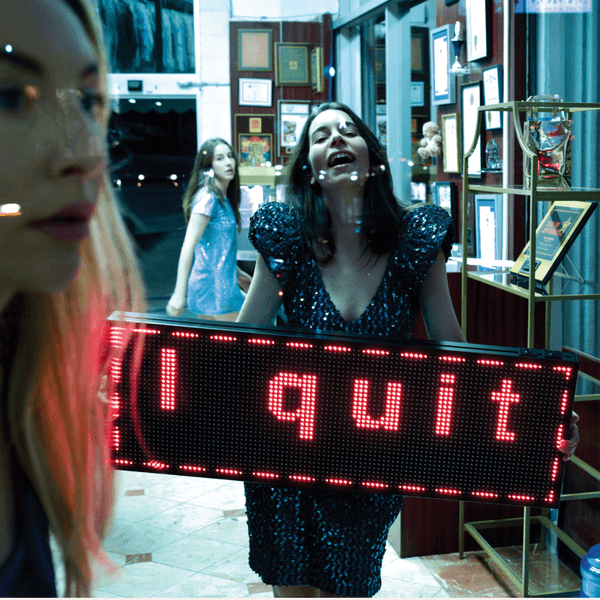"When I See The Sun"

Now there’s an optimistic-sounding title: romantic, possibly, in that vaguely-cryptic sorta way, but nonetheless suggesting something rather upbeat. Perhaps this is some sort of joke on Codeine’s part – a band often credited as pioneers of so-called “sadcore” certainly ain’t gonna be glass-half-full types, right? Either way, this is a career-spanning collection of virtually everything the New York trio ever committed to tape, and upbeat, downbeat, whatever: it’s intensely awesome. At fifty-two tracks and scarcely anything in the way of pace or pizzazz (at least in an immediate sense – “slowcore” was the other pseudo-genre spearheaded by these guys), it’s something of a headfuck. But man, what a headfuck.
Primarily, it’s worth viewing When I See The Sun as an inspired reissue of their “official” canon. As is often the case with deluxe packages, there’s a plethora of bonus material which veers from mildly diverting to genuinely fascinating, but let’s start off by revisiting the original albums. When Frigid Stars first emerged in 1989 the band was still in its infancy, taking the glacial grace of Red House Painters and lacing it with the off-kilter riffage of post-hardcore noise rock. Underpinned by the somnambulic strumming of John Engle, opening track ‘D’ finds Stephen Immerwahr murmuring “D for effort/D for intent”. Sure enough, the band sound like they’re barely trying, but that’s part of the beauty of Codeine – they never get out of first gear, so if you wanna pay attention you’re just gonna have to forget about racing ahead and just walk alongside ‘em.
Delve further into their debut and you’ll find further examples of the band’s influences . ‘New Year’s’ was originally written by Bitch Magnet frontman Sooyoung Park, but Codeine apply its melody to the rhythm from Joy Division’s ‘Atmosphere’, creating a thoroughly absorbing ballad from the most understated of textures. Meanwhile, ‘Cigarette Machine’ practically creates the blueprint for Slint’s legendary Spiderland opus, demonstrating the ripples Frigid Stars would create amongst the late ’80s American underground. This is a forcefully brilliant record, its stark beauty totally undimmed by the passage of time.
Three years later, the band re-emerged with the Barely Real EP, which maintained its predecessor’s quiet-loud aesthetic and even found space for a guest appearance by Gastr Del Sol’s David Grubbs. His solo piano track ‘W.’ would later be reworked as ‘Wird’ by the full band for second album The White Birch, arguably Codeine’s most significant statement. Having lost the endlessly-fluid percussion skills of Chris Brokaw to his other band Come in ’92, replacement Doug Scharin played even more sparingly, reducing their already unfussy sound to a skeletal whisper, interspersed with blasts of voluminous distortion. Ice Ages pass between each drum hit, making every line feel heavy, poignant, and unerringly powerful.
Following the aforementioned Spiderland, Immerwahr, Angle and Scharin had decided to relocate to Slint’s native Louisville, Kentucky to record The White Birch (which would also turn out to be their last album). As if to demonstrate the reciprocal nature of the two acts’ influence on each other, the epic ‘Sea’ descends from the sort of morose slowcore that Low all but trademarked into a mess of tense, threatening power chords – exactly the sort of trick Slint guitarist David Pajo had mastered. But this record is all Codeine, and the soaring chorus of ‘Loss Leader’ serves as a welcome reminder that they were perfectly capable of putting the rock back in post-rock, even when squeezing in as few beats per minute as possible. The White Birch might just be their masterpiece.
As for the extras – well, it seems kinda discourteous to dismiss ‘em so quickly when they make up over half of this collection, but they’re certainly less essential than the original records. A few are worth mentioning, however: the jaunty ‘Skeletons (SDS Demo)’ represents the only real evidence that Codeine could speed things up nicely, while the lo-fi ‘Corner Store’ feels like Built To Spill in its wonky, harmony-laden alt-pop. There are also demo versions of tracks that would later end up on the two full-lengths, including a fascinating version of ‘Cave-In’, with its bold chorus reduced to a mere mutter.
Usually, career overviews are designed as an introduction, but this is far more than that, and it’s more than worth your time and effort. Sure, there’s lots of it, and it’s depressing as hell. But, fittingly for a band named after an opiate, it’s worth listening to this to realise how numb it all feels – a dull, throbbing ache rather than an over-wrought expression of pain. Even after all this time, Codeine won’t heal many broken hearts, but they’ll sure as hell help a lot of people learn to deal with ‘em. Sometimes a little misery goes a long way.
Get the Best Fit take on the week in music direct to your inbox every Friday

Tropical F*ck Storm
Fairyland Codex

Loyle Carner
hopefully !

YUNGBLUD
Idols





